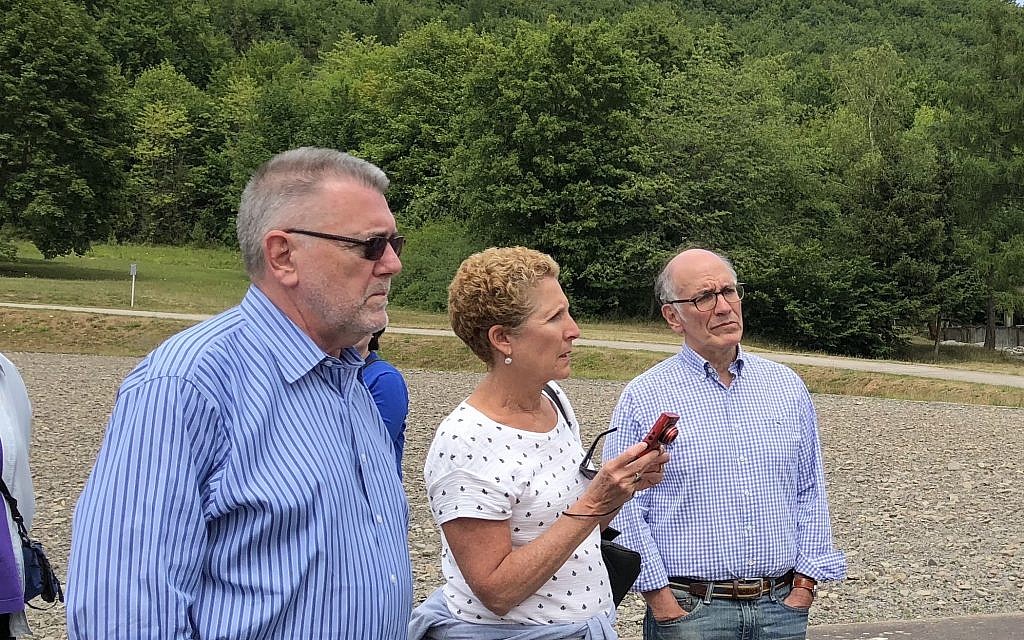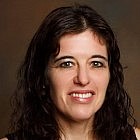Holocaust Educator Follows Anne Frank’s Path
Judith Schancupp recently walked Anne Frank’s path from Westerbork to Bergen-Belsen concentration camp.

Judith Schancupp travels around Georgia escorting Holocaust survivors as they speak to rural school students. “When you meet an actual survivor, it’s very unforgettable. You can forget almost anything, but you don’t forget that,” she says.
The Georgia Commission on the Holocaust educator also has traveled around Europe three times with the Jewish Foundation for the Righteous. For her latest trip last month, Schancupp was one of 12 middle and high school teachers and Holocaust center staffers from six states chosen to participate in JFR’s 2018 European Study Program in Germany and the Netherlands.
The JFR tour for educators is an intensive immersion with visits to concentration camps, ghettos and Holocaust memorials. The goal is to create a deeper understanding of the complex and tragic history of the Holocaust.
Get The AJT Newsletter by email and never miss our top stories Free Sign Up
Although she’s toured concentration camps on previous trips, Schancupp said this time she got to walk Anne Frank’s path from Westerbork, the transit camp outside of Amsterdam, to Bergen-Belsen concentration camp, where she and her sister died.
As an educator with the Holocaust Commission’s Anne Frank exhibit in Sandy Springs, the experience is helping her share more about one of the world’s most famous young Holocaust authors.
“People are very interested in Anne Frank … My trip just scratched the surface.”
Schancupp, a former teacher and docent with the William Breman Jewish Heritage Museum, also studied the history of German Jews while on this trip July 8-16. Buchenwald was the only concentration camp she had seen before, she said.
One of the most memorable parts of the trip was visiting a tunnel in Dora-Mittelbau where prisoners made rockets for the Nazi war effort in 1944. Nazis “were losing the war, but taking prisoners, Jews and non-Jews. They were regrouping, thinking they were going to win the war. The lifespan of the prisoner there was six to eight weeks, depending on the job they were doing.”
While a docent at the Breman Museum, Schancupp was invited to attend a week-long seminar with JFR in 2002 at Columbia University. As a result she was chosen for the European trips, which she attributes to her commitment to the Holocaust, including involvement with survivors and adult education.
JFR Executive Vice President Stanlee Stahl said, “We recognized back then that she was the teacher you want for your children and grandchildren. Her commitment, her passion, her investment in learning more about the topic and her level of care truly emulated that.
“Judy is a phenomenal teacher. Her passion and commitment to teaching the Holocaust is unparalleled,” Stahl said. “She takes what she learns and brings it to the courses and classrooms she works with through the Georgia Holocaust Commission. She is an outstanding educator, and we look forward to her future participation in other JFR programs.”
Schancupp said JFR was initially started to support rescuers who saved and hid Jews during the Holocaust. But the organization evolved to help teachers teach the Holocaust.
“JFR has given me tools to be very comfortable [teaching the Holocaust] because I did not have a formal history degree, but certainly I’ve read and seen a lot.”
Her background is as a teacher in Detroit and Atlanta, a reading specialist, and a Breman Museum docent who coordinated speakers to tour schools and military bases.
She leads similar visits in her role with the Georgia Holocaust Commission.
Growing up in New York, the Holocaust wasn’t discussed much. Now, with so few Holocaust survivors left, “it’s more important than ever before to teach the Holocaust,” said Schancupp.
She recalled a conversation with Holocaust survivor and architect Ben Hirsch, who designed the Holocaust memorial at Greenwood Cemetery, the Breman Museum Holocaust exhibit and several other Atlanta synagogues and Jewish structures.
“I told him I’m humbled by what I teach. I asked him what I can do and he said, ‘Just teach.’”
While some people assume she’s the child of survivors or a survivor herself, “I’m not old enough to be a survivor. It’s just an interest I have, really because, ‘There but for the grace of G-d go I.’”
People continue to express disbelief that the Holocaust happened, she said. “It’s still hard to believe what they did,” she said of the Nazis. “Generations barely know what the Holocaust is. … It’s man’s inhumanity to man. It’s the study of the human spirit, a sociology study, a history study.”




comments